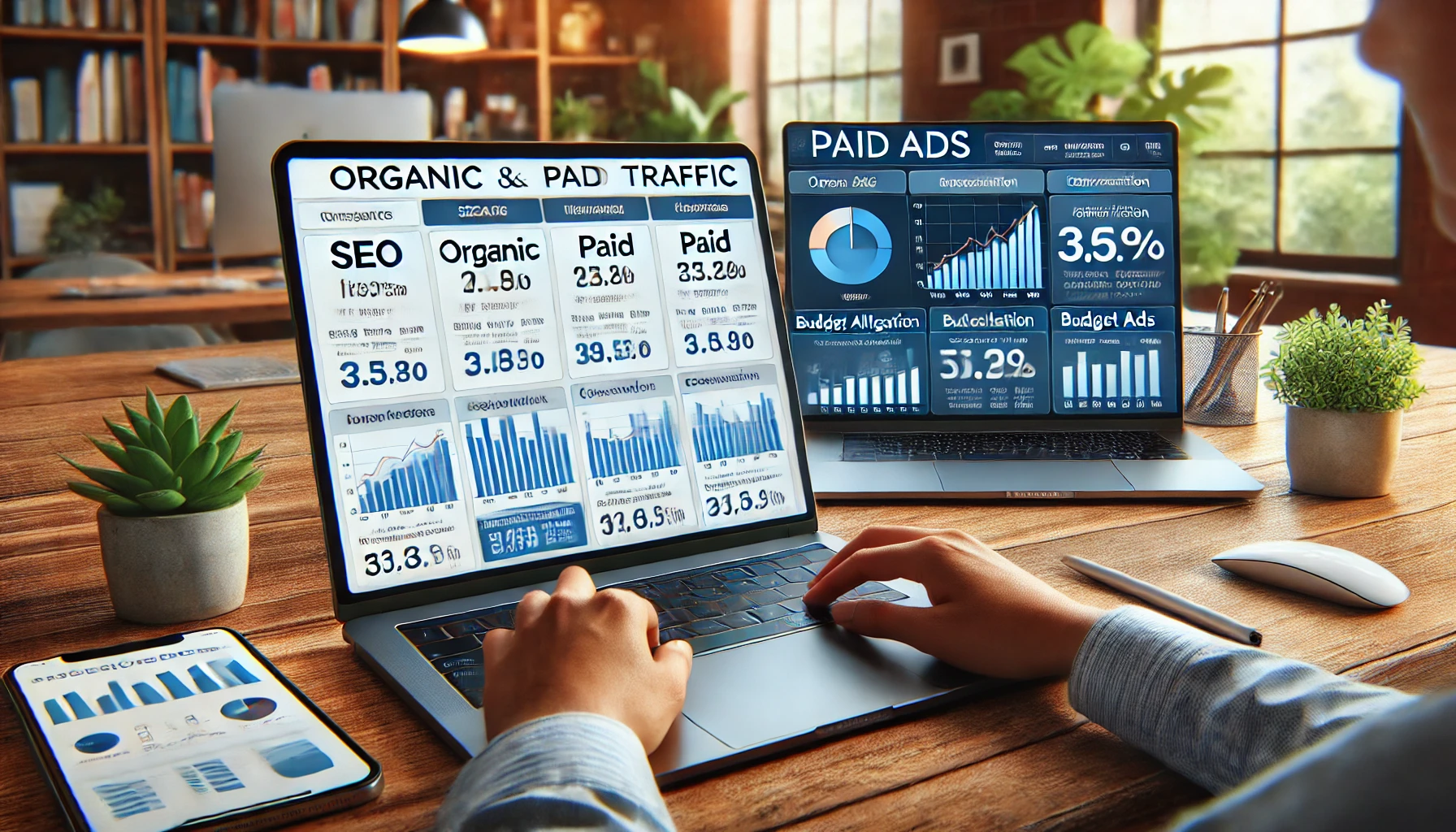Understanding Organic and Paid Traffic
When driving visitors to a website, there are two main approaches:
- Organic Traffic: Comes from search engines, social media, and referrals without direct advertising costs.
- Paid Traffic: Comes from online ads, where you pay platforms to show your content to targeted audiences.
Each method has advantages and drawbacks, and choosing the right one depends on your business goals and budget.
Organic Traffic: How It Works
Organic traffic is generated naturally through:
- SEO (Search Engine Optimization): Ranking higher on Google through content optimization.
- Content Marketing: Creating valuable blog posts, videos, and social media content.
- Social Media Engagement: Attracting visitors through shares and interactions.
Pros of Organic Traffic:
✔ Free (no direct advertising cost)
✔ Long-term sustainability
✔ Builds brand credibility
Cons of Organic Traffic:
❌ Takes time to see results
❌ Requires continuous effort and content creation
Paid Traffic: How It Works
Paid traffic involves running ads on platforms like:
- Google Ads (Search & Display campaigns)
- Facebook & Instagram Ads
- YouTube & TikTok Ads
- LinkedIn Ads (For B2B marketing)
Pros of Paid Traffic:
✔ Immediate results
✔ Highly targeted audience
✔ Scalable based on budget
Cons of Paid Traffic:
❌ Requires financial investment
❌ Needs continuous optimization to remain profitable
Which One Should You Choose?
For short-term results, paid traffic is the best option. If you need long-term stability, organic traffic is the way to go. Many businesses use a combination of both for optimal performance.
